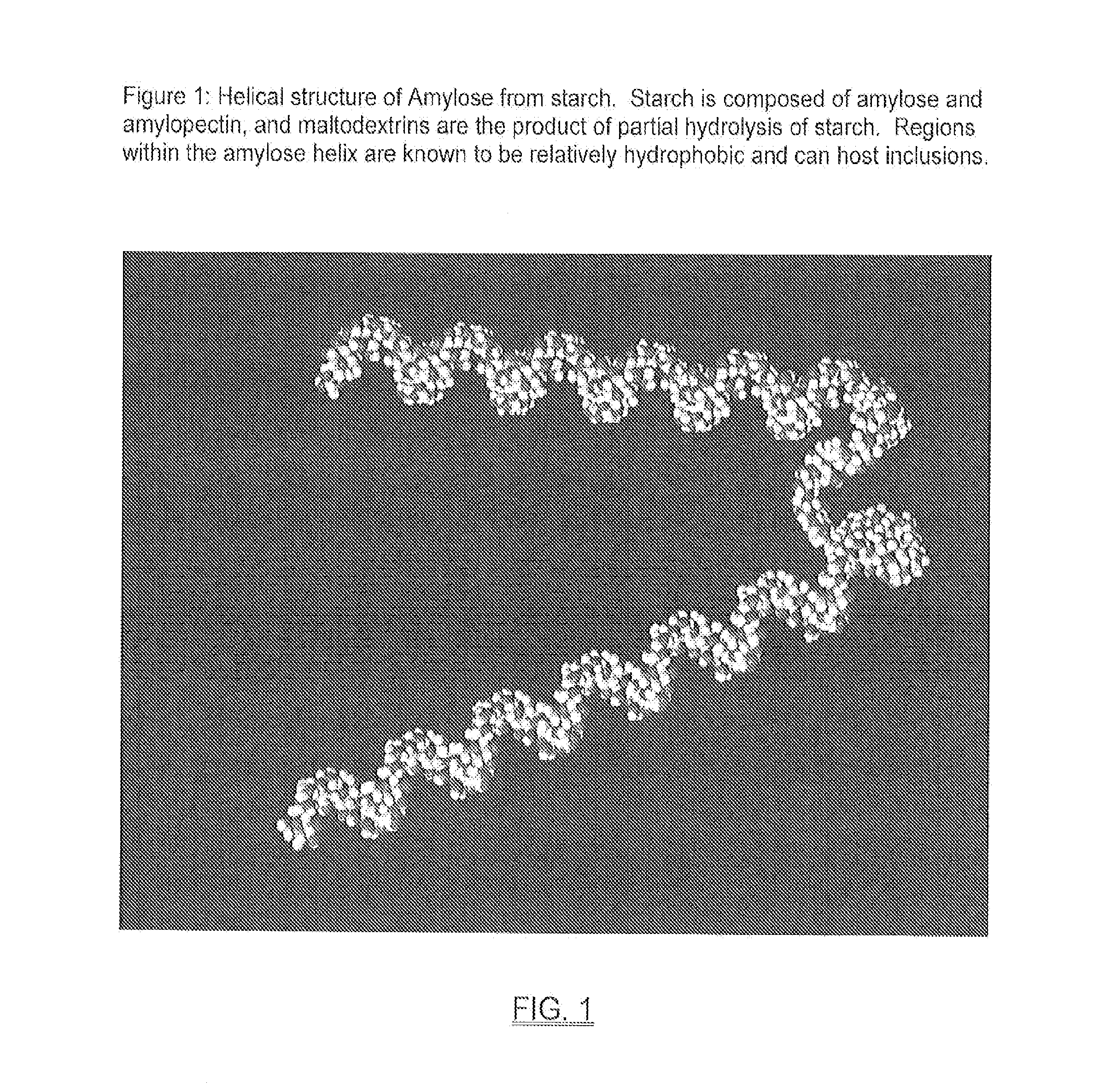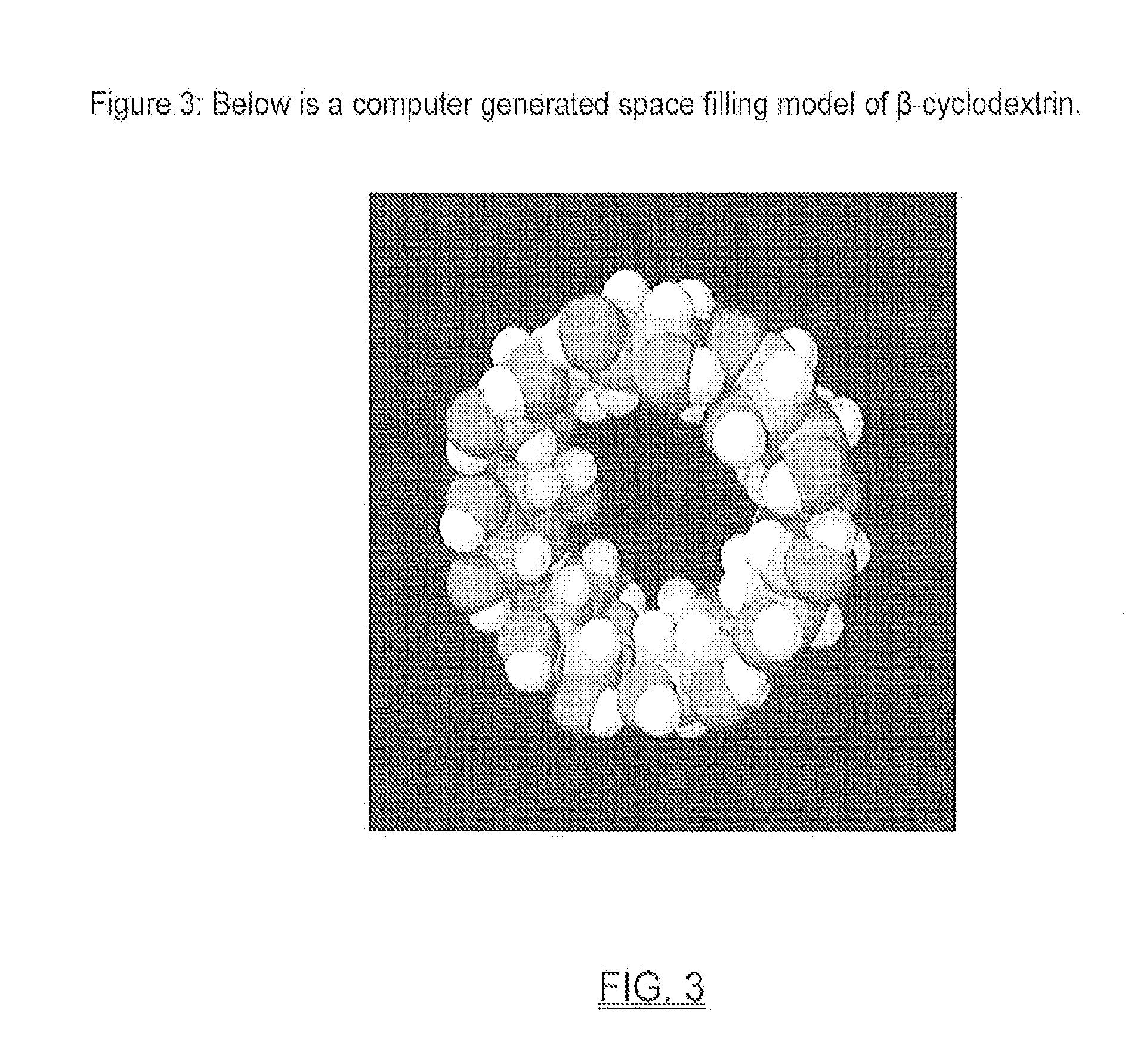Self-assembled nano-structure particle and method for preparing
a nano-structure particle and self-assembling technology, applied in the field of self-assembling nano-structure particle and method for, can solve the problems of high equipment and time consumption, reduced particle size of selected solids, and limited growth, and achieves the effects of simple, safe and cost-effectiv
- Summary
- Abstract
- Description
- Claims
- Application Information
AI Technical Summary
Benefits of technology
Problems solved by technology
Method used
Image
Examples
example 1
Preparation of a Self-Assembled Nanoparticle Based Colloidal Pigment Dispersion Using Maltodextrin
[0101]In this example, polyphosphoric acid (superphosphoric acid 105%) was heated, with agitation, and maltodextrin (MALTRIN M-100) was added with agitation. The final mass ratio was approximately 1.06 maltodextrin to 1.00 superphosphoric acid (105%).
[0102]At a temperature between about 80° C. and 100° C., color pigment chosen from Pigment Red 122, Solvent Blue 15, or Pigment Yellow 74 was added to the gel with agitation. The final mass ratio was approximately 0.2 pigment to 1.00 superphosphoric acid 105%. Following this, the gel was stirred at elevated temperature for size reduction and annealing for some period of time. Upon completion of the size reduction / annealing period, the reaction was quenched by the addition of water to the reaction mixture.
example 2
Preparation of a Self-Assembled Nanoparticle-Based Colloidal Pigment Dispersion Using Cyclodextrin
[0103]In this example, polyphosphoric acid was heated, with agitation, and β-cyclodextrin (CAVAMAX W7) was added with agitation.
[0104]The final mass ratio was approximately 1.06 β-cyclodextrin to 1.00 superphosphoric acid 105%. At a temperature between about 40° C. and 60° C., color pigment chosen from Pigment Red 122, Solvent Blue 15, Solvent Green 7, Solvent Green 36, or Pigment Yellow 74 was added to the gel with agitation. The final mass ratio was approximately 0.2 pigment to 1.00 superphosphoric acid 105%. Following this, the gel / pigment mixture was stirred at elevated temperature for size reduction and annealing for some period of time. Upon completion of the size reduction / annealing period, the reaction was quenched by the addition of water to the reaction mixture or by the addition of the reaction mixture to water.
example 3
Preparation of a Self-Assembled Nanoparticle-Based Colloidal Dispersion of Pigment Using Cyclodextrin
[0105]In this example, glyoxylic acid (50%) was heated, with agitation, while adding β-cyclodextrin (CAVAMAX W7) with agitation.
[0106]The final mass ratio was approximately 1.99 β-cyclodextrin to 1.00 glyoxylic acid (50%) aqueous. At a temperature of between about 40° to about 60° C., Pigment Yellow 180 was added to the gel fluid with agitation. In this specific example, the final mass ratio was approximately 0.083 pigment to 1.00 glyoxylic acid (50%) aqueous. Following this, the gel / pigment mixture was stirred at elevated temperature for size reduction and annealing for some period of time. Upon completion of the size reduction / annealing period, 0.9 parts (relative to 1.00 part of glyoxylic acid (50%) aqueous) of concentrated sulfuric acid (about 93-98%) was added to the reaction, stirred, and heated at 60° C. for an additional 6 hours prior to quenching by the addition of water.
PUM
| Property | Measurement | Unit |
|---|---|---|
| temperatures | aaaaa | aaaaa |
| temperature | aaaaa | aaaaa |
| temperature | aaaaa | aaaaa |
Abstract
Description
Claims
Application Information
 Login to View More
Login to View More - R&D
- Intellectual Property
- Life Sciences
- Materials
- Tech Scout
- Unparalleled Data Quality
- Higher Quality Content
- 60% Fewer Hallucinations
Browse by: Latest US Patents, China's latest patents, Technical Efficacy Thesaurus, Application Domain, Technology Topic, Popular Technical Reports.
© 2025 PatSnap. All rights reserved.Legal|Privacy policy|Modern Slavery Act Transparency Statement|Sitemap|About US| Contact US: help@patsnap.com



